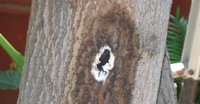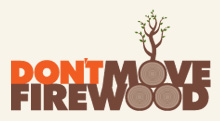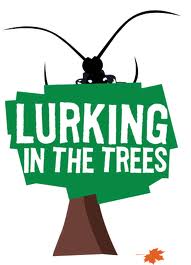
February 26th, 2013
Hello Urban Forestry friends,
Here’s what’s happening in urban and community forestry:
Don’t forget March 7-14th is California Arbor Week. Check arborweek.org to find a local events, download event planning tools and templates, web banners, and other resources.
Thanks for all you do for urban forestry and our communities!
Regards,

Sonali Shah
Communications Manager
California Urban Forests Council
Top 10 urban planning, design, and development books published in 2012
If you are like me, you are always looking for an interesting book. You’ll want to be sure to check out Planetizen eleventh annual list of the ten best books in urban planning, design, and development published in 2012.
 Selections include:
Selections include:
- “Straphanger” – What people around the world are doing to create more sustainable and civil communities built around transit.
- “Nature Wars: The Incredible Story of How Wildlife Comebacks Turned Backyards into Battlegrounds” – An examination of humankind’s disconnect from nature.
- “Urban Bikeway Design Guide” – A toolkit to help municipalities design safer streets that accommodate pedestrians, bicyclists, and drivers.
Healthy Soil Leads to Healthy Trees
For trees at the bottom up approach is critical and healthy soil makes a big difference in nurturing healthy trees. Not much thought goes into soil, but it’s a complicated and complex ecosystem that must be maintained.
 Tips for healthy soil include:
Tips for healthy soil include:
· Mulching
· Composting
· Mycorrhizae treatments
· Root biostimulants and fertilizer
Read more on healthy soil, by clicking here.
 Tips for healthy soil include:
Tips for healthy soil include:· Mulching
· Composting
· Mycorrhizae treatments
· Root biostimulants and fertilizer
New Study finds: Forests absorb much more greenhouse gas than previously thought!
As tree advocates we appreciate the many benefits of trees and it seems that the value we get from our trees is constantly found to be increasing.
A recent study found that trees store much more greenhouse gases than previously thought — proving that forests (natural and urban) play a large large role in climate change implications.
According to Yude Pan, a US Forest Service scientist and a lead author of the study, “The new information suggests forests alone account for the most significant terrestrial carbon sink, and that non-forest lands collectively cannot be considered a major carbon absorption sink.”
|
|
|
Partners in Crime: The Polyphagous Shot Hole Borer & fungus Fusarium sp.

The Polyphagous Shot Hole Borer and fungus Fusarium sp. is especially harmful to avocado trees. However, the beetle has a number of other hosts, including the box elder, black locust, bigleaf maple, and more.
Click here for tips on what to look for, including single exit hole with surrounding white powdery exudates, and who to contact if you find the problem.
Immediate steps to help stop the spread of pests
“DON’T MOVE FIREWOOD”:
- Use firewood from local sources – “Buy it Where you Burn It”
- Leave firewood at home – do not transport it to recreational cabins,
campgrounds or parks - Anyone planning to purchase or burn firewood is encouraged to visit www.firewood.ca.gov to learn how help stop the spread of GSOB and other pests through the movement of firewood.
- Share with your network
More Resources:
Trees, Pests, and People film by Dontmovefirewood.org
Is the story of three kinds of trees: Walnut, Avocado, and Ash, all threatened by invasive insects and diseases—forest pests. This is the story of how these pests affect people’s everyday lives and how we can all help to protect our trees and forests. Click here to go to the site.

Imapinvasives
Facilitates the management and sharing of invasive species information, including the extent of infestations, search efforts, and treatment outcomes. Affordable, sustainable, and collaborative tools developed by the Partnership provide a flexible platform for aggregating invasive species data from a wide variety of sources. Click here to go to the site.
Report A Pest by the California Dept of Food & Ag
Provides tips and information on how to report a New or Unusual Plant or Pest in your area. Click here to go to the site.
Continental Dialogue
Cultivates collaborative action among diverse interests to abate the threat to North American forests from non-native insects and diseases. Click here to go to the site.
Here’s a V-Day dinner and a movie idea:
Lurking in the Trees, the Movie

Lurking in the Trees film Dontmovefirewood.org
When a foreign invasive pest – the Asian longhorned beetle – was discovered to be killing Worcester’s MA maple trees, the city took decisive action to halt the spread of the beetle, protecting trees across New England from certain death. Click here to go to the site.


